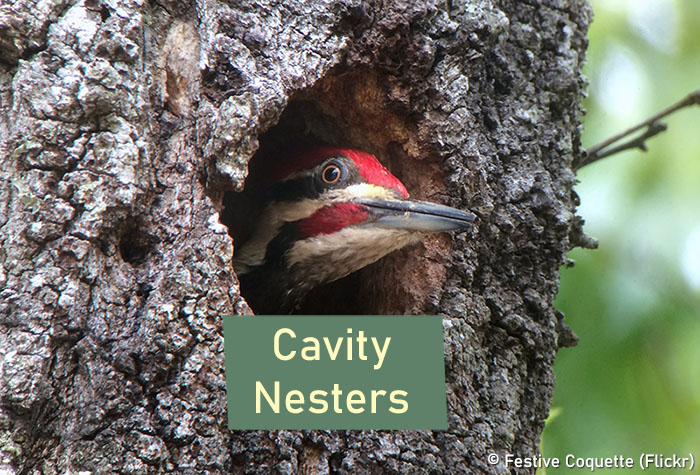
There are many cavity-nesting native species, even some that might not immediately come to mind. For example, two of our most beautiful birds, the wood duck and hooded merganser, seek natural cavities for nesting and adapt easily to man-made nest boxes.
Your bluebird box will not attract either of these showy fellows, but it might end up attracting one of our other native cavity nesters, such a tree swallow or house wren. Please do not treat these guests as you do the House Sparrow. Welcome them to your nest box and enjoy them as they raise their families. If you have only one bluebird box and it becomes home to a swallow or chickadee, consider putting up a second bluebird box. In areas where tree swallows are common, a pair of bluebird boxes placed 5-25 ft. apart will allow both species to peacefully nest, side by side.
Learning to identify other native birds that might use your bluebird box is easy. Here is a quick reference guide for identifying the nests of some of the more common cavity nesters you might have the opportunity to enjoy.
On this page
Bluebirds
The 1-4 in. tall nest is built from grasses, twigs or pine needles and is lined with fine grasses. The nest cup is usually fairly deep. There are typically four to six eggs, pale or powder blue, sometimes white. All three species make a similar nest in appearance, but reflect local materials.
House Wren
House wrens can be aggressive nesters, often filling as many nearby nesting locations as possible with dummy nests to keep other wrens out of their territory. A house wren nest is easy to identify. Look for a nest filled with sticks and then lined with feathers, fur and fine plant fibers. The nest cup itself is fairly shallow. Six to eight small, speckled tan-colored eggs are typical.
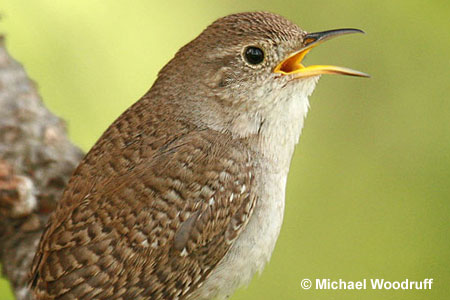
House Wren
Black-capped / Carolina chickadee / Other Chickadee Species
The popular chickadee builds a soft nest of moss and plant down. The nest cup is often lined with fur. Five to eight white eggs with dark speckles are typical.
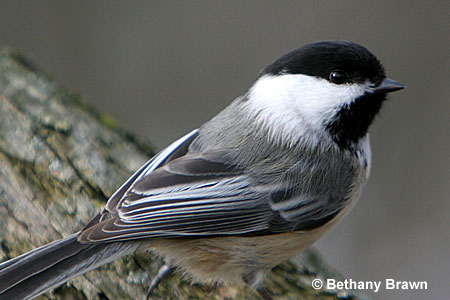
Black-capped Chickadee
Tree Swallow
A beautiful swallow that will often make use of a bluebird nest box. The nest is somewhat similar to the bluebird. It is built from various grasses, somewhat coarser than the typical bluebird nest. The nest cup is generally flatter and shallower than the bluebird’s and almost always lined with feathers. Five to seven white eggs are typical.
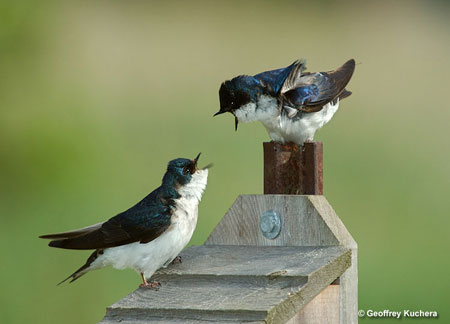
Tree Swallows having a discussion.
House Sparrow
To say it plainly, House Sparrows are the enemy and should not be tolerated. Look for a large messy nest made from coarse grasses and weeds, often adorned with pieces of scrap paper, bits of plastic wrap or other items. The nest has a tunnel-like entrance. They usually lay 5-7 cream-colored eggs, marked with brown.
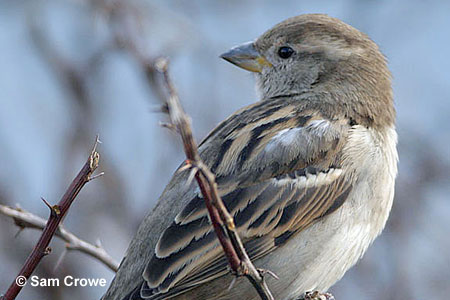
House Sparrow-female
European Starling
European Starlings are another introduced species that compete with native cavity nesters, including bluebirds. Using the proper hole size in your nest box will eliminate starlings.
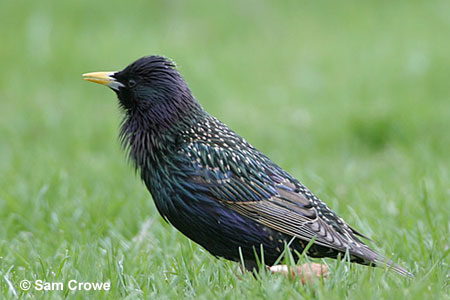
European Starling – breeding plumage
There are other cavity nesters that might also like to call your bluebird house home. Learn to identify the common birds in your area and welcome them to your bluebird box if they decide to grace you with their presence.

